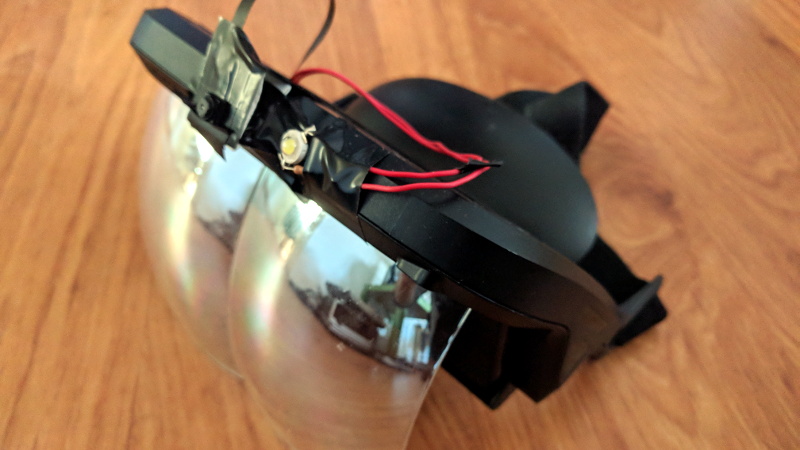Community, Leadership, Experimentation, Diversity, & Education
Pittsburgh Arts, Regional Theatre, New Work, Producing, Copyright, Labor Unions,
New Products, Coping Skills, J-O-Bs...
Theatre industry news, University & School of Drama Announcements, plus occasional course support for
Carnegie Mellon School of Drama Faculty, Staff, Students, and Alumni.
CMU School of Drama
Tuesday, February 19, 2019
Immersive Augmented Reality on a Budget
Hackaday: By now we’ve all seen the cheap headsets that essentially stick a smartphone a few inches away from your face to function as a low-cost alternative to devices like Oculus Rift. Available for as little as a few dollars, it’s hard to beat these gadgets for experimenting with VR on a budget. But what about if you’re more interested in working with augmented reality, where rendered images are superimposed onto your real-world view rather than replacing it?
Subscribe to:
Post Comments (Atom)

4 comments:
I love it when people do things like this and create a replica of a piece of technology they wanted for a much cheaper cost. I am also excited about the possibility and opportunities created with a product like this becoming open source. I have been taking classes on laser cutting, 3D printing, and Arduino, so I have been learning a lot about the open source community and the endless amount of possibilities for imaginative makers. Open source software and hardware lets makers download/acquire the plans or core code of a product for free so they can modify them. While I think augmented reality is a far reach for traditional audience-stage theatre, I do think that this kind of headset has great potential for installations and interactive experimental theatre, or performances with smaller audience sizes. I like that it is a hands free device, because it eliminates having a phone out during a performance, which I think is a larger distraction than it is a cool augmenting component.
I always wanted to try since I first heard about it. It’s like science fiction, except it's not fiction, it's in real life. I have yet to try VR, because it is so expensive, the headset I could get for one of my consoles are way out of my budget. But there are options so I shouldn’t make any excuses, like (they even mentioned it in the beginning of the article) those cheap cardboard ones that you attach to your Iphone, but if I were to try VR, I would want to try one of the nice headphones, since they come with ways to interact with the augmented reality instead of just showing me it. And as the article mentioned, I would rather experience VR with rendered images that are superimposed onto my real world view, instead of just replacing it. That's why I’m glad to hear what I read about in the article, people making cheap and radical Vr.
This is pretty cool, especially for its price. I’m not sure it has a lot of practical applications in its current state, but I’m sure that the near future will begin to bring some more thoroughly engineered and polished products to market soon, with inevitable price dropping and copies soon thereafter. This could be a really cool effect for live and/or immersive theatre pieces in the future. While VR has grabbed the stage recently, and while its certainly great for individual entertainment and video games, I think AR has more potential for environments that involve people interacting, either with their environments or with each other. With VR you have infinite possibilities, but having a person move around too much or to try to put multiple people in the same environment is difficult. With AR headsets, you could do everything from 3D movies where the effects not only come towards you but move around the audience to games akin to wii games in a real space to haunted houses with terrifyingly realistic 3D effects. I hope we see further development of this technology soon.
VR headsets / immersive augmented reality seems like such a cool concept, and since the Oculus Rift came out, I’ve wanted to try it out myself. But like the article states, and other people have said, it’s fairly expensive so I haven’t had the opportunity. I’ve seen the cardboard smartphone ones floating around before, but I always thought that those wouldn’t be as exciting. The one they create in the article however appears to be much more in line with the high tech Oculus Rift system. I also love the creativity and ingenuity that goes into taking all of these different cheap materials and figuring out a way to turn it into augmented reality glasses for less than a third of the cost of the professionally made ones. Hopefully this’ll create cheaper alternatives for these systems and perhaps I’ll get the chance to try it out. I’m curious to see future applications of AR like in TV shows or movies.
Post a Comment